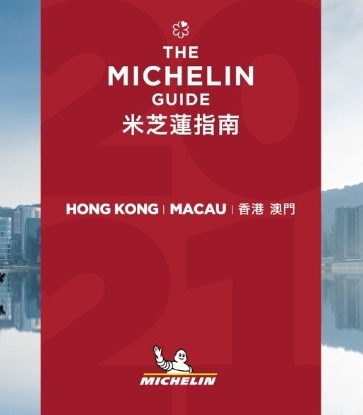More easy-going coffee drinkers can be easily satisfied, enjoying the feeling of spacing out while brewing coffee. Yes, operating coffee machines and tools can be a pleasure, but if you find it a hassle and a chore much too stressful to handle, then maybe it isn’t your cup of “coffee.”
Hand-brewed coffee has a variety of tools to choose from, all with respective investment costs and different handling difficulties.
Below are five commonly-seen types for all your coffee needs.

Chemex
The Chemex coffee pot is a rather fun toy with low barriers to entry for purchase (around HK $250-$600, depending on size), being cheap to operate, requiring just the occasional change of filter paper or washing of filtering cloth. However, it is easy to learn yet difficult to master, as the grinding of beans, water temperature, water adding speed and gesture movements will all affect the extraction of coffee, resulting in beginners often brewing coffee with a different taste each time. To properly control the quality of the coffee is by no means easy.
A barista once said: "The heart of a Chemex user needs to be calm, clear and bright as a mirror, and without any distractions to brew a pure cup of coffee." It is just like talking about Buddhism and martial arts, showing how interesting the Chemex coffee pot can be.

Moka Pot
The moka pot’s price isn’t too expensive as well; a basic model can be purchased with about HK $200 (of course, if you love works from designers such as Alessi or Philippe Starck, then the price will be reflecting).
The first hand-brew coffee toy and original beans (specifically Colombian beans) this writer purchased were from Old Mr. Ho of the Central’s Olympia Greco-Egyptian Coffee. A great deal of time has passed since, and the old master has also passed away some time ago, but fortunately, his family took over and the aroma of great coffee continues to spread.
To this day, Bialetti and Alessi from Italy are still the companies that produce the most models of moka pots. A moka pot is divided into three layers: the bottom is filled with water, and the ground coffee is then placed in the funnel at the middle layer. After installing the top layer, the pot is then heated on a stove, and when the water at the bottom starts to boil, the pressure passes through the funnel into the top layer, extracting the coffee in the process. The pot is easy to operate, but also dependent on many variables, hence making it easy to learn but difficult to master, with the size of the fire, the amount of coffee and the degree of grinding all impacting the end product. The finished product is particularly rich with a slight burnt fragrance (also easy to be overheated); this can be a very challenging brewing method.

French Press
Depending on the size, a French press can usually be purchased for around HK $200-$500. There are many brands available, and in Hong Kong, the products released by Bodum and Hario are the most trendy.
The French press is relatively easy to grasp, so long as the coffee beans are ground to a moderate size and the water temperature is correct. Simply add water, wait 2 to 3 minutes and, voilà—you have a cup of coffee. Most baristas recommend offices and friends new to hand-brewed coffee to start off with using a French press. Many years ago, this writer used to pick on the French press’s boring methods of use and lack of style, and therefore gave away all models he possessed. A year ago, he was gifted a Bodum Chambord and decided to start using the French press again, feeling it to be easy to use and stable to control, and beginning to fall in love with it all over again.

Pour Over
Pour overs and conical filter cups should make a good pair, and as the price isn’t high, one may inadvertently buy several. The long, sharp-tipped design of the pour over helps with increasing the speed of adding water and keeping control of strength, while the cone-shaped filter cups help control the extraction of coffee via hot water, both of which are indispensable.
Pour overs are regarded as suitable extraction tools for both novices and veterans alike. First of all, it has a larger margin for error, and even if one may not be skillful enough, it wouldn’t cause the cup of coffee to be completely destroyed. At the same time, it helps to bring out the many finer elements of the coffee, such as the coffee’s smoothness, aroma, and all kinds of taste. The recently trending shallow-roasted coffee beans are also very suitable for these pour overs.

Siphon
Siphon coffee originated in Germany, using a two-pot top-bottom structure, as well as a unique siphon pot as brewing tools. Hario is a popular brand in Hong Kong, and is widely used in both coffee shops as well as homes of coffee lovers alike. The siphon looks elegant, and it's method of operation is also particularly eye-catching, watching the coffee rise and fall in the two pots like performing magic, generating a lot of discussion topics in the process. All these add to the siphon’s unique style and charm.
It may be because of this that many are especially particular about the many styles of using the siphon, such as the hand gestures when adding water, as well as the actions when mixing coffee powder movements. These have all generated huge amounts of discussion between coffee lovers. This writer likes the fact that the siphon presents in a specific and close-up way the true look of coffee (which is quite similar to the Chemex pot), but is also discouraged in the difficulty to achieve a consistent quality (also similar to Chemex pots). Operating and cleaning the tools can also be rather time-consuming, which makes it possible to play with this piece of equipment when you have the time.
This article was written by Chen Zhi Xiong and translated by Foo Chay Yeow. Click here to read the original version of this story.




















